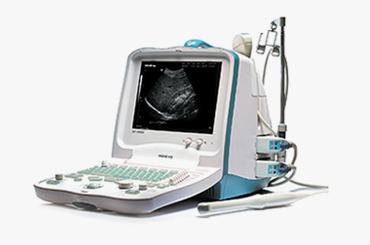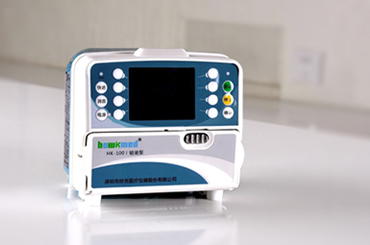What Should I Pay Attention To in Battery Aging Test?
Feb 02, 2024 Pageview:1
Battery aging is a critical aspect of assessing the performance and longevity of batteries in various applications, from consumer electronics to electric vehicles. Conducting thorough battery aging tests is crucial to understanding how batteries degrade over time and under different conditions.
Today, we’ll explore the key considerations for a successful battery aging test. Keep reading to discover more.
Determine the Test Criteria
Before initiating a battery aging test, it is essential to define the specific criteria that will be evaluated during the testing process. Consider the following factors when choosing:
Battery Chemistry and Type
The first step in determining the test criteria for battery aging involves a comprehensive understanding of the battery's chemistry and type. Different battery chemistries, such as lithium-ion, nickel-metal hydride, and lead-acid, exhibit unique aging characteristics. Therefore, it is imperative to tailor the test criteria to the specific attributes and degradation patterns associated with the chosen battery chemistry.
Environmental Factors
Environmental conditions play a pivotal role in battery performance and aging. Temperature, humidity, and other external factors can significantly impact a battery's lifespan and degradation rate. In determining the test criteria, it is essential to consider the range of environmental conditions the battery may encounter during its operational life.
Performance Metrics
Capacity degradation, expressed as a percentage reduction in the battery's original capacity, is often a primary focus. Impedance changes, indicative of internal resistance alterations, provide insights into the battery's efficiency and power delivery capabilities. Cycle life, the number of charge-discharge cycles a battery can undergo before significant degradation occurs, is a fundamental metric for assessing long-term durability.
Aging Scenarios
Considering various aging scenarios is essential for a comprehensive battery aging test. Different applications expose batteries to diverse stress factors, and replicating these scenarios aids in understanding how the battery will perform in specific use cases.
Select the Appropriate Test Equipment
Selecting the right test equipment is a critical aspect of conducting an effective battery aging test. Precision measurement instruments form the backbone of the testing process, enabling accurate monitoring and recording of various parameters. High-quality voltmeters, ammeters, and wattmeters are essential for capturing voltage, current, and power data with precision.
These instruments should have a sufficiently high resolution to detect subtle changes in the battery's performance. Additionally, their measurement accuracy and reliability play a crucial role in ensuring the integrity of the test results. Investing in top-tier measurement equipment guarantees that the collected data is not only accurate but also reflective of the nuanced changes occurring within the battery during the aging process.
Consider factors like:
Data Acquisition Systems
Integrating advanced data acquisition systems into the testing setup enhances the efficiency and thoroughness of the battery aging test. These systems facilitate the real-time collection of data, enabling researchers to monitor key parameters continuously. Data acquisition systems also allow for automated control of the test conditions, ensuring consistency and reproducibility across multiple test cycles.
Environmental Control Equipment
Considering the significant impact of environmental factors on battery aging, the selection of appropriate environmental control equipment is paramount. Temperature chambers, humidity controllers, and thermal management systems help recreate specific environmental conditions, ensuring that the battery undergoes testing in a controlled and repeatable environment.
Safety Measures
Safety is a paramount concern in battery testing, especially when dealing with high-energy-density batteries. Selecting equipment with built-in safety features and incorporating additional safety measures in the testing setup is imperative to mitigate potential risks.
Compatibility with Battery Type
Different battery chemistries and form factors require specialized testing equipment. Ensuring compatibility between the selected test equipment and the specific battery type under examination is crucial for obtaining meaningful results. For instance, lithium-ion batteries may have different voltage and current requirements compared to nickel-metal hydride batteries.
Standardize the Test Operation Process
The foundation of a successful battery aging test lies in the development of a comprehensive test plan. This plan serves as a roadmap, outlining the step-by-step procedures, test conditions, and performance metrics to be evaluated. Clearly defining the objectives of the test and the expected outcomes establishes a standardized framework for the entire testing process.
The test plan should include detailed information on the initial state of the battery, the sequence of charge and discharge cycles, measurement intervals, and any specific conditions or scenarios that will be simulated during the test. By documenting these parameters in the test plan, researchers ensure consistency in the testing approach, making it easier to replicate the experiment and compare results across different tests.
The following factors should be considered during this stage:
Measurement Standardization
To ensure the accuracy and reliability of the battery aging test results, standardizing measurement procedures is crucial. This involves specifying the methods used to measure key parameters such as voltage, current, temperature, and impedance. Calibration of measurement instruments at regular intervals is essential to maintain accuracy and traceability.
Calibration and Quality Control
Periodic calibration of test equipment is a fundamental aspect of standardizing the test operation process. Calibration ensures that measurement instruments remain accurate and reliable over time, preventing the introduction of errors into the data. A well-documented calibration schedule, specifying the frequency and procedures for calibration, should be an integral part of the test plan.
Documentation of Deviations
Documenting deviations provides transparency in the testing process, allowing researchers to understand the impact of any changes on the results. This transparency is crucial for maintaining the integrity of the data and for facilitating accurate interpretation during the analysis phase.
Automated Control and Monitoring
Automation is particularly valuable in long-duration tests involving numerous charge-discharge cycles. It ensures that the battery is subjected to precisely controlled conditions, enabling a more accurate assessment of its aging behavior over an extended period.
Post-Test Analysis
Standardization extends beyond the test operation process to include post-test analysis. Researchers should establish standardized procedures for analyzing the collected data, interpreting results, and drawing conclusions. This involves the use of consistent methodologies and tools for data analysis, ensuring that the findings are reliable and reproducible.
Conclusion
Conducting a battery aging test is a meticulous process that requires careful consideration of test criteria, appropriate test equipment selection, and standardization of the test operation process. By paying attention to these key factors, researchers and engineers can obtain accurate and reliable data, enabling a deeper understanding of battery behavior over time. This knowledge is instrumental in the development of improved battery technologies and ensuring the long-term reliability of batteries in diverse applications.
- Prev Article: How to choose a drone battery model?
- Next Article: What Are the Specifications of Drone Battery Models?
Leave Message
Hottest Categories
-
Hottest Industry News
-
Latest Industry News










